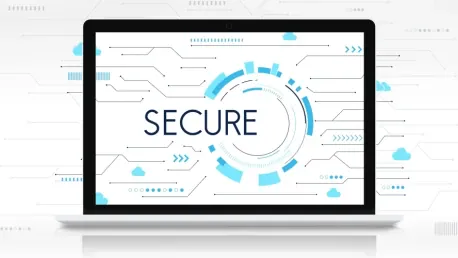In today’s digital landscape, Software as a Service (SaaS) integrations are essential for seamless data exchange between systems. However, these integrations come with significant security risks that can compromise data integrity, regulatory compliance, and customer trust. Ensuring the security of SaaS integrations is not just a technical necessity but a business imperative.
The Importance of Authentication
Authentication is crucial in ensuring the security of systems and protecting sensitive information from unauthorized access. It verifies the identity of users and devices, preventing malicious activities such as data breaches, fraud, and cyber-attacks. Robust authentication mechanisms, such as multi-factor authentication, enhance trust and integrity, making it harder for attackers to exploit vulnerabilities.
Verifying Identities
Authentication is the first line of defense in securing SaaS integrations. It involves verifying the legitimacy of entities accessing the system. Various methods such as usernames and passwords, certificates, and OpenID Connect (OIDC) ID tokens are commonly used. Each method has its strengths and weaknesses, but the goal remains the same: to ensure that only authorized users gain access. Usernames and passwords are the most traditional method, although they are prone to vulnerabilities like brute-force attacks. Certificates offer more secure access but require rigorous management. OIDC ID tokens enhance security in modern applications by providing standardized tokens used for both authentication and authorization.
Securing access through authentication safeguards sensitive data and prevents unauthorized entities from infiltrating systems. Increasingly, organizations are moving towards more sophisticated methods beyond just usernames and passwords. For instance, certificates are now frequently employed for mutual TLS to establish server-to-server authentication, ensuring both ends of the communication are authenticated. Additionally, adopting federated identity solutions using standards like SAML (Security Assertion Markup Language) further strengthens identity verification processes across disparate systems.
Multi-Factor Authentication
To bolster security, multi-factor authentication (MFA) is recommended. MFA requires users to provide two or more verification factors, reducing the likelihood of unauthorized access. This could include something the user knows (password), something the user has (security token), and something the user is (biometric verification). Implementing MFA adds an extra layer of security, making it significantly more challenging for malicious entities to gain access. This approach helps protect critical resources by ensuring that even if one authentication factor is compromised, additional barriers make data breaches less likely.
The adoption of MFA has become a critical trend, especially for protecting privileged accounts that, if compromised, could cause significant damage. More advanced implementations of MFA integrate with mobile devices, leveraging inherent device capabilities like facial recognition or fingerprint scanners, thus enhancing the user experience while maintaining robust security. Additionally, adaptive MFA solutions use contextual data to provide dynamic access control decisions, offering higher security for high-risk actions without consistently interrupting user workflows with additional verification steps.
Authorization and Least Privilege
Defining Permissible Actions
Once authentication is established, authorization determines what actions a user can perform. This step is crucial for preventing unauthorized access and accidental changes. By defining permissible actions such as read, write, edit, and delete, organizations can minimize vulnerabilities. Ensuring that users only perform necessary actions prevents the exploitation of excessive privileges, which could lead to intentional or inadvertent misuse of the system. Clear, role-based access control policies are essential to streamline the authorization process, aligning user capabilities with their job responsibilities while minimizing security risks.
Additionally, well-defined authorization practices involve regularly auditing and updating permissions to adapt to changes in user roles and responsibilities. Advanced techniques such as policy-based access control (PBAC) allow for the dynamic assignment of permissions based on predefined policies, ensuring that authorization aligns with organizational security policies. Also, segregating duties where sensitive operations require multiple approvals can prevent single points of failure, significantly enhancing the system’s resilience against internal and external threats. This structured approach to authorization bolsters overall security postures while ensuring compliance.
Implementing Least Privilege
The principle of least privilege suggests starting with zero access and progressively granting minimal required access. This approach ensures a balance between functionality and security. Limiting admin access and regularly reviewing permissions can significantly reduce the risk of internal threats. Adopting a least privilege model involves giving users the minimum levels of access necessary to perform their functions. This minimizes the attack surface and limits potential damages caused by compromised accounts or insider threats.
Furthermore, dynamic access criteria, such as context-aware access controls, can enhance the least privilege principle by granting or restricting access based on real-time evaluations of user behavior and contextual signals. Over-privileged users often become targets for attackers; hence, continuous monitoring and automatic revocation of unnecessary permissions play a critical role. Implementing a just-in-time (JIT) privileged access model, where higher-level permissions are granted only when needed and for a limited duration, can greatly elevate security measures while maintaining operational efficiency.
Network and Session Security
Restricting IP Ranges
Network security tools are limited for SaaS integrations, but restricting trusted IP ranges can mitigate risks. By allowing access only from necessary IPs and confining it to working days and hours, organizations can enhance security. This approach ensures that only authorized devices within approved network parameters can access SaaS applications, reducing the risk of unauthorized access. Implementing a strategy combining IP whitelisting and geographic restrictions can further strengthen this security layer by limiting access based on physical locations.
Moreover, leveraging virtual private networks (VPNs) and dedicated network segments for SaaS integrations can provide additional security by isolating sensitive data exchanges from broader network traffic. Advanced network access control solutions can enforce policies that dynamically grant or revoke access based on the context, such as the user’s location, device health, or behavior patterns. Establishing robust network security for SaaS integrations is crucial for preventing unauthorized access and ensuring compliance with regulatory standards regarding data transfer and access.
Protecting Sessions
Session security is vital against internal attacks. Methods such as setting session log-out times, locking sessions to specific IP addresses, and shielding against attacks like clickjacking and cross-site request forgery are recommended. These measures ensure that sessions remain secure and less vulnerable to exploitation. Proper session management includes enforcing automatic session termination after periods of inactivity and utilizing secure cookies to store session tokens, mitigating the risk of session hijacking.
Additionally, implementing session fixation protection measures, such as regenerating session IDs upon user authentication or privilege escalation, can prevent attackers from hijacking sessions. Monitoring active sessions for unusual behavior, such as multiple simultaneous logins from different locations, can also help identify compromised accounts in real-time. Enhancing session security not only safeguards user data but also fortifies the overall integrity of the SaaS integration, making it resilient against sophisticated internal and external threats.
Application Security
Secure Coding Practices
Application security starts with secure coding practices. Sanitizing inputs to prevent SQL injections and cross-site scripting (XSS) is essential. Using static code analyzers in integrated development environments (IDEs) and mandating thorough code reviews are crucial steps in identifying and mitigating vulnerabilities early in the development process. Developers should adhere to industry-standard coding guidelines and security frameworks to create applications resistant to common attack vectors.
Educating development teams on secure coding practices through regular training and emphasizing the importance of security in the software development lifecycle (SDLC) can further strengthen application security. Establishing a culture that prioritizes security from the outset ensures that security considerations are integral to every stage of development. Incorporating automated security tools like dynamic application security testing (DAST) during the development process adds an additional layer of verification, allowing for the continuous identification and remediation of security flaws.
Regular Security Audits
Regular security audits and penetration testing can help identify potential weaknesses in the application. These audits should be conducted by third-party experts to ensure an unbiased assessment. Continuous monitoring and updating of security protocols are necessary to keep up with evolving threats. Implementing a robust vulnerability management program that includes periodic security assessments allows organizations to discover and address vulnerabilities before they can be exploited.
Penetration testing emulates real-world attack scenarios, providing insight into potential exploit paths and highlighting areas that need further fortification. Conducting these tests regularly helps organizations to adapt to new threats and ensures compliance with security standards and regulations. Additionally, integrating security tools like web application firewalls (WAFs) can offer continuous protection by filtering and monitoring HTTP traffic to prevent attacks such as SQL injection and XSS. Regular security audits combined with continuous improvement practices create a resilient application environment.
Securing Information
Data Encryption
Data encryption is a method of converting information into a secret code that hides the information’s true meaning. This process transforms readable data into an unreadable format, which can only be reverted to its original form by those possessing the decryption key. Encryption plays a crucial role in safeguarding sensitive data, securing communications, and protecting information integrity. It is essential for ensuring privacy and confidentiality in various domains, including online transactions, data storage, and secure communications. With advancements in technology, encryption methods continuously evolve to counter new threats and ensure robust protection against unauthorized access.
Data is the most valuable asset, necessitating encryption both at rest and in transit. Using HTTPS for data transfer and encrypting sensitive data stored in databases are fundamental practices. Classifying data elements and establishing appropriate access controls further enhance data security. Encryption ensures that even if data is intercepted, it remains unreadable without the proper decryption keys. Employing modern encryption standards and algorithms is crucial to maintaining robust security.
Furthermore, organizations should consider adopting end-to-end encryption practices, especially for highly sensitive information and communication channels. This type of encryption ensures that data is protected throughout its entire journey. Periodically auditing encryption policies and practices helps maintain compliance with industry standards and ensures that the organization is using the most up-to-date and secure encryption methods available. Enhancing these protocols supports the proactive protection of sensitive data from unauthorized access and breaches.
Data Masking and Anonymization
Data masking and anonymization are critical processes in protecting sensitive information. By obfuscating personally identifiable information (PII) and other confidential data, organizations can ensure that privacy is maintained and regulatory requirements are met. These techniques are especially important in industries such as healthcare, finance, and technology, where data breaches can have severe consequences. Data masking transforms the data into a non-readable format for unauthorized users, while anonymization de-identifies the data so that it cannot be traced back to an individual. Together, these practices help in safeguarding data against unauthorized access and misuse.
To protect sensitive information, data masking, anonymizing, or pseudonymizing are effective techniques. These methods ensure that even if data is accessed without authorization, it remains unintelligible and unusable. Data masking involves obfuscating specific data within a database, making it inaccessible without proper authorization, while anonymization permanently removes personally identifiable information, making data irretrievable to its original source.
These techniques are essential for organizations that need to share data across systems or with third parties while maintaining privacy. Implementing strong data governance policies that include regular audits and updates to masking and anonymization strategies can enhance data protection. Additionally, using secure data-sharing platforms and leveraging advanced cryptographic techniques for anonymization can provide robust security for distributed data without compromising performance. These data security practices ensure regulatory compliance and protect the interests of both the organization and its customers.
Management of Encryption Keys
Effective management of encryption keys is critical to maintaining the security and integrity of encrypted data. It involves the generation, storage, distribution, and lifecycle management of keys to ensure that they are safeguarded against unauthorized access or misuse. The use of secure methods and protocols for key management helps prevent data breaches and ensures compliance with various security standards and regulations. Advanced key management solutions often include features such as automated key rotation, centralized key management, and robust access controls to further enhance security measures.
Key Generation and Rotation
Utilizing different keys for varied data types reduces the impact of a potential breach. Generating in-house keys (“bring your own key”) and controlling the key lifecycle are recommended practices. Frequent key rotations and limiting admin access to keys further enhance security. Key management is a critical aspect of securing encrypted data, as mismanagement can lead to vulnerabilities. Organizations must develop and adhere to stringent key management policies to protect these critical assets.
Effective key management practices include using automated key rotation systems to ensure that encryption keys are regularly updated without disrupting operations. Employing hardware security modules (HSMs) for key storage can enhance security by providing a secure environment for key generation, storage, and management. Furthermore, adopting a key management service with built-in compliance features ensures alignment with industry standards and best practices, which is essential for maintaining a secure and compliant data environment.
Secure Key Storage
Storing encryption keys securely is as important as the encryption itself. Using hardware security modules (HSMs) or cloud-based key management services can provide an additional layer of security. Regularly reviewing and updating key management policies is essential to maintaining robust security. These secure storage solutions protect encryption keys from unauthorized access and tampering, ensuring that the cryptographic integrity of the data remains intact.
Integrating key management solutions with existing security infrastructure can streamline operations and enhance overall security posture. Organizations should implement access controls and audit logs to monitor and review key usage, ensuring compliance with security policies and detecting any unauthorized activities. Additionally, regularly testing key recovery and backup procedures ensures that encrypted data remains accessible in case of hardware failures or other incidents, thereby maintaining continuous data protection and business continuity.
Transport Layer Security
Employing TLS Protocols
Employing Transport Layer Security (TLS) protocols like HTTPS ensures data is encrypted during transfer. Staying updated with the latest TLS protocols and utilizing certificate authority (CA) certificates are best practices. These measures protect data from being intercepted and tampered with during transmission. TLS encryption establishes a secure channel over which data can be securely sent, significantly reducing the risk of man-in-the-middle attacks.
Deploying strict transport security (HSTS) along with TLS can further enforce security by ensuring browsers only connect to the server using secure HTTPS connections. Regularly updating and renewing certificates is crucial to maintaining secure communications. Automated certificate management tools can help streamline this process and ensure continuous security. These practices effectively shield data during transit, align with modern security standards, and ensure that the integrity and confidentiality of the data are upheld.
Regular Certificate Updates
Regularly updating and renewing certificates is crucial to maintaining secure communications. Expired or outdated certificates can expose data to potential threats. Automated certificate management tools can help streamline this process and ensure continuous security. These tools can monitor certificates across multiple environments, issuing alerts before certificates expire, and automatically renewing them, reducing administrative overhead and preventing lapses in security.
Additionally, transitioning to certificate authorities and services that adhere to recognized standards and practices ensures trust and compliance. Implementing strong validation methods for certificate issuance guarantees that the entities a certificate represents are genuinely authenticated. Periodic review and testing of certificate deployment and revocation processes maintain a robust security posture. Regular updates and vigilant management of certificates contribute to the sustainable security of data communications across integrated SaaS platforms.
Logging and Monitoring
Comprehensive Logging
Logging involves collecting detailed data on system activities. This data is invaluable for identifying and diagnosing security incidents. Comprehensive logging should cover all aspects of the system, including user activities, system changes, and access attempts. Effective logging facilitates thorough root cause analysis in the event of a security breach and supports compliance with regulatory requirements by documenting activities and access patterns across systems.
Furthermore, employing centralized log management solutions can streamline the aggregation and analysis of logs from various sources, providing a holistic view of system health and security. Enabling log integrity checks ensures that logs remain unaltered, which is crucial for forensic investigations. Integrating logging with monitoring systems can help correlate events in real-time, offering ongoing insights into system activities, enhancing overall security posture, and ensuring compliance with industry and regulatory standards.
Real-Time Monitoring
In our modern digital landscape, Software as a Service (SaaS) integrations play a crucial role in allowing for seamless data exchange between various systems. Companies rely on these integrations to streamline their operations, improve efficiency, and foster collaboration. However, the convenience brought by SaaS integrations also introduces notable security risks. These risks can endanger data integrity, threaten compliance with regulations, and erode customer trust. For businesses, safeguarding the security of their SaaS integrations transcends being merely a technical task; it becomes a critical business imperative. Organizations must adopt vigilant security measures and continuously monitor their integrations to mitigate potential threats. Employing robust security protocols, conducting regular security audits, and staying updated on the latest security practices can help ensure that data remains protected. Ultimately, the commitment to securing SaaS integrations not only protects sensitive information but also bolsters a company’s reputation and customer confidence.









